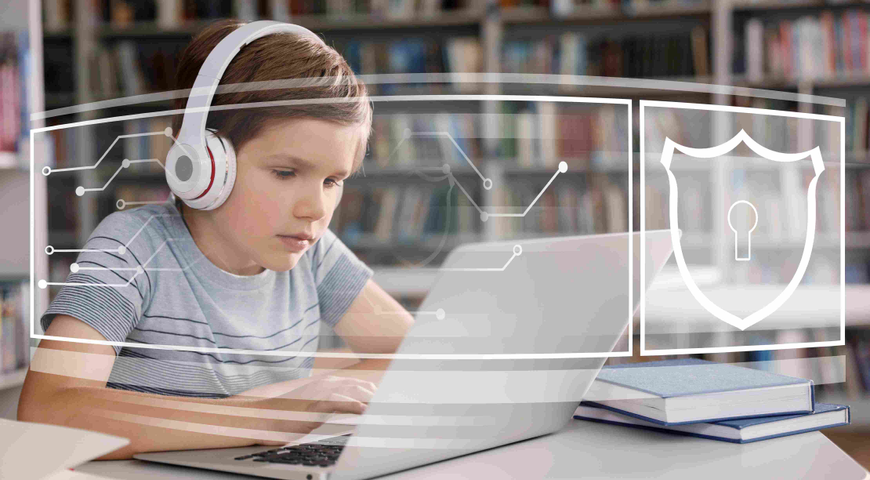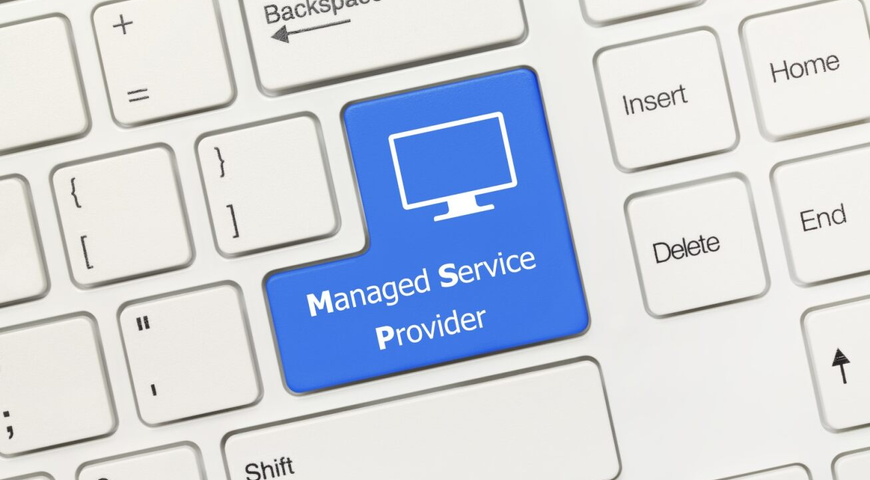
In today’s digital era, where the internet has become an integral part of our lives, ensuring kids’ internet safety is paramount. As a parent, it’s natural to be concerned about the potential online threats your children might face. This comprehensive guide will serve as your companion — providing the necessary tools and insights to navigate the digital world alongside your children while promoting online safety for kids.
The importance of internet safety for kids
Before diving into the strategies and tips, it is essential to understand why internet safety for kids is such a critical issue. The internet is a wonderful place to learn, shop, talk to friends and play games. 95% of teens have access to a smartphone and 45% say they are online “almost constantly,” according to the Pew Research Center.
Unfortunately, the internet has darker sides, such as identity thieves, online predators and others who try to harm you. Therefore, keeping kids safe online is essential and you should be aware of the different dangers.
How you can be proactive in making sure you keep the internet as safe as possible for your kids is by talking to them about how to use the internet, teaching them about the different online dangers, and being up to date with the latest trends and technologies on how to use the internet safely.
If we don’t teach our children about internet safety, it can cause serious damage and have long-term consequences. Think of psychical and mental health issues. We must discuss the risks and dangers of being online with our children so they know what is out there and how to protect themselves.
Scams and online predators are getting more sophisticated, using new techniques and tools; therefore, they can sometimes be harder to see. But with the right tools in place and up to date, you can protect and keep your kids safe on the internet.
Types Of Online Threats That Kid Might Face
Internet safety for children has never been more critical than it is today. As technology advances and our digital footprint expands, children are exposed to an ever-growing range of online threats. Think about cybercrime and threats such as phishing, cyberbullying, online predators and identity theft.
Different kinds of threats are dangerous for the online safety of our children. Based on research from BCG, we know 93% of children ages 8 to 17 are on the internet; nearly three out of four respondents said they had experienced at least one cyberthreat, and only 52% of children feel safe online — which is just a bit more than half of all children worldwide who have access to the internet. This means you should protect your child online and know what can be done to ensure internet safety for our teens.
When seeing those statistics, we know that we must focus on internet safety for kids and educate them about online risks and threats. We all want a safe online environment where teenagers can explore, learn and thrive without danger.
Internet safety tips for kids — Parents' guide
To ensure internet safety for kids and help them to handle the evolving digital world, you should consider the following insightful tips and rules that can help protect them when they surf the internet.
• Educate them and set clear rules and boundaries regarding internet use — such as limiting screen time and restricting certain websites or social media access.
• Teach children about personal information and the importance of keeping it private to avoid being scammed.
• Use parental control tools and security software to monitor and filter content like Acronis Cyber Protect Home Office.
• Make sure to encourage open communication and establish a trusting relationship with your child to ensure they are sharing information about what they are doing online and if they are in any danger.
• Model good behavior by demonstrating excessive screen time and showing respect in online interactions.
• Update your software regularly to be sure that the latest security features are in place.
Other essential elements of online internet safety for children are:
• Educating children about internet safety
• Building digital resilience in kids
• Being a positive digital role model
• Encouraging safe online practices
These elements will be covered separately — with examples and explanations — in this guide to internet safety for kids.
Educating children about internet safety
Internet usage, knowledge and safety are evolving daily and keeping up to date can be tricky. But we need to keep up to date to ensure our children’s online safety. The internet plays a central role in our lives; educating children about online safety from an early age has become crucial. Empowering them with the knowledge and skills to navigate the digital world responsibly ensures their well-being and protection.
When discussing internet safety with your children, tailoring the conversation and topic to their age and development is important. Younger children probably don’t understand complex technical terms, while older children may require more in-depth discussion about online relationships and threats.
It is critical to emphasize the importance of using devices responsibly and under adult supervision. As a parent, you are here to help and guide them through this digital world. As your children age, you can introduce them to more specific topics, such as online privacy, cyberbullying, and the risks of sharing personal information. Make certain you focus on an open environment where you can openly communicate, share experiences and your children feel comfortable.
When you explain online threats to children, use relatable examples and appropriate language; storytelling can help make them easier to understand — especially for more complex concepts. Make sure to create a “safe space” for children to ask questions and where they can express their feelings about online threats. Make sure to listen to them, and let them know that they can always ask for your guidance and support.
There are some resources and websites out there that can help with this:
• BrainPOP — it offers educational videos on various topics, including internet safety
• National Cyber Security Alliance’s Stay Safe Online — it offers resources and tips for kids, teens, parents and educators on internet safety and cybersecurity
• Be Internet Awesome — program by Google that teaches kids about online safety through interactive games and activities
Building digital resilience
Children are exposed to various online threats and challenges. Digital resilience is a concept that helps kids to navigate the online world safely, responsibly and confidently. It helps them to cope, make informed decisions and overwin these online risks and challenges.
It will help our kids to:
• Recognize and respond to online risks and harmful content
• Develop critical thinking skills to make the right decisions
• Find and seek help and support from trusted adults when facing online challenges
Below you can find some elements that can help your child to develop digital resilience:
• Set clear boundaries — have clear guidelines on internet usage and screen time
• Open communication — make sure to maintain open and honest communication with your kid about their online experiences
• Teach critical thinking skills — educate about the importance of critically evaluating online information, such as verifying sources, questioning headlines and being cautious about sharing information
• Establish a supportive network — explain that it is essential to have a network of friends who share similar values and that it can help with creating a safe space to discuss challenges and experiences
• Encourage problem-solving — as this helps to deal with online conflicts and challenges
• Healthy copy mechanisms — explain ways to deal with negative online experiences or emotions
In these ways, you can play a vital role in nurturing digital resilience for your child and their online safety.
Being a positive digital role model
Children learn by example, and your behavior plays a significant role in shaping their online habits. There are different ways to be a positive role model:
• Show respect online by exhibiting appropriate behavior in your online interactions, through emails, social media posts or other comments.
• Make sure to balance screen time — a balanced approach of being online and doing other things, such as being active outdoors or reading a book, is important.
• Practice privacy by emphasizing the importance of safeguarding personal information
Encouraging safe online practices
Another way to encourage online safety for kids is by explaining and discussing the importance of using strong passwords, being cautious about clicking on unknown links or downloading suspicious files, and reporting any incidents of cyberbullying or suspicious online behavior.
Strong passwords are:
- Unique — don’t use the same password twice
- Have at least ten characters — which should be random
- Have letters, numbers, special characters and upper and lower case — the more variety, the better
A password manager can help to stay in control of it and to make it more manageable.
Nowadays, links are shared in emails, in communities and by friends. Some of them even look so real that they should be safe, right? Well, randomly clicking on links that lead to unknown websites on your computer, phone or even your smart TV can put your kid, yourself and your family at risk as these can contain malware or ransomware. Make sure to be cautious when clicking on links and guarantee that the sender is real, well-known and is sharing a link you were previously discussing.
It is essential to keep communication lines open, so whenever something happens, ensure that information will be shared with you — from any incidents of cyberbullying or weird online behavior. Your kid should feel safe and assured when sharing things that happen. As this creates trust, you will also be aware and be able to help if needed.
To summarize, make sure to:
• Have regular check ins — by discussing you’re the experiences they have online where you can provide guidance or address any concerns.
• Stay informed together — by keeping up with the latest online trends and safety measures.
• Use reputable cyber security software, that will help you keep your kids safe online
In a world where technology is seamlessly integrated into our lives, guaranteeing internet safety for kids is a shared responsibility between parents and their children. By understanding the potential risks, teaching your child about online safety, fostering digital resilience and leading by example, you can empower your child to navigate the digital world confidently and securely. Open communication and ongoing engagement are crucial to building a solid foundation of online safety for your family. You can create a digital environment that promotes learning, connection and well-being — making certain that you can navigate the digital world safely.
Most Frequently Asked Questionss
1. What is the importance of online safety for kids?
a. Online safety for kids is crucial because the internet exposes children to a wide range of potential risks, including cyberbullying, online predators, inappropriate content, identity theft and more. Teaching kids about online safety helps them navigate the digital world responsibly, protects their personal information, maintains their mental and emotional well-being, and develops healthy online habits that will benefit them as they grow up.
2. How can parents promote internet safety for kids at home?
a. Parents can promote internet safety for kids at home by:
i. Setting clear guidelines and rules for internet use.
ii. Educating their children about the potential dangers online.
iii. Using parental control software to filter content and set time limits.
iv. Encouraging open communication so that kids feel comfortable discussing their online experiences and concerns.
v. Teaching critical thinking skills to help kids evaluate online information.
3. What are the five internet safety rules for kids to follow?
a. The following rules should be followed:
i. Never share personal information online.
ii. Use strong passwords: Teach kids to create strong, unique passwords for each account and not to share them with anyone except trusted adults.
iii. Be cautious with strangers: Advise kids not to communicate with people they don't know in real life and not to accept friend requests or messages from strangers.
iv. Think before posting: Teach kids to think about the potential consequences of their online posts and to avoid sharing inappropriate or sensitive content.
v. Report and block: Instruct kids to report any suspicious or harmful content, as well as to block individuals who make them uncomfortable online.
4. Why is child internet safety education crucial in today's digital age?
a. Child internet safety education is crucial because children are growing up in a digital age where online interactions are an integral part of their lives. Without proper education, they can become vulnerable to cyberbullying, harassment, scams and inappropriate content. Teaching them about online safety empowers them to make informed decisions, protect their privacy and develop positive online behavior.
5. What are some effective strategies for keeping children safe online?
a. Open communication, education, parental controls and privacy settings.
6. Can you provide practical e-safety tips for kids using social media?
a. Set privacy settings, be selective with friend requests, be respectful when communicating, think before sharing, report and block, and make sure to verify information before opening or sharing.
About Acronis
A Swiss company founded in Singapore in 2003, Acronis has 15 offices worldwide and employees in 50+ countries. Acronis Cyber Protect Cloud is available in 26 languages in 150 countries and is used by over 20,000 service providers to protect over 750,000 businesses.




